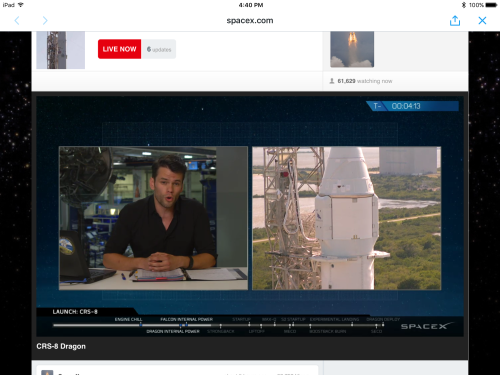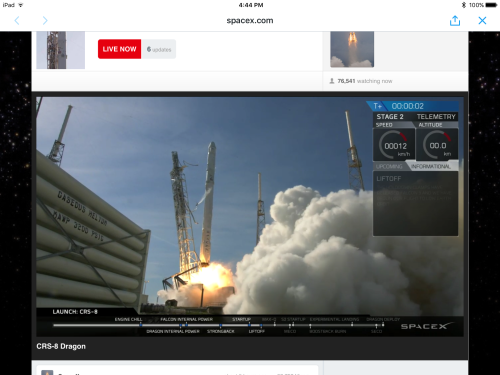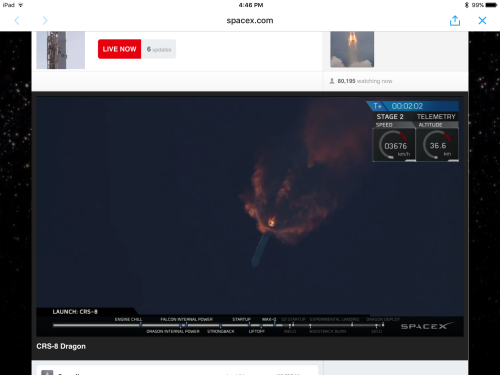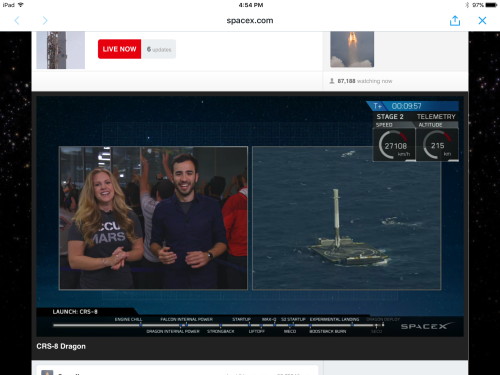Once again I had a ring-side seat to a bit of important history being made, the launch of the SpaceX Falcon 9 rocket with CRS-8 mission and payload up to the ISS. I watched it simultaneously from my front yard (with the image taken above right after liftoff) as well as on my iPad Air 2 streaming from the SpaceX feed. Using that feed I watched the payload reach orbit and then watched the first stage land, on its drone ship, in the middle of the Atlantic. Talk about stoked. If I weren’t in my early 60s I’d make a bee-line out to Hawthorne California and SpaceX’s headquarters and do whatever I could to work there. This is the real future, real technological prowess, not the crap VR gear being pushed. We need to be forever pushing forward and outward, not turning inward and away from the challenges of the real world. What follows are screen captures from the Air 2. Capturing a bit of history for myself.






The landing of the Falcon 9 first stage, which spectacular, isn’t the only spectacular part of this flight. CRS-8 is carrying an inflatable habitat up to the ISS. If it works then it will attach to one of the ISS’ ports and be expanded. The Bigelow Expandable Activity Module, or BEAM, is an attempt to attach one of the expandable habitats onto an existing space station. Bigelow Aerospace has already launched two test articles into orbit, but this is the first time an expandable has been delivered as part of a cargo and attached to an existing structure. This is in line with what the future use of much larger expandables and will allow another way to lower the cost of building large enclosed habitable spaces on orbit. When (not if) this is proven to work later next week, then this flight will be remembered not for one milestone, but two: lowering the cost of launch, and lowering the cost of habitation. These are the true milestones that NASA should have been trying to solve ever since the end of the space race and the end of Apollo. We seemed to be trying to go there with Skylab, but it fell back to Earth before the first Shuttle could fly and help boost Skylab to a more stable orbit. Thus did incompetence and politics conspire to cripple our expansion into space from the 1980s up until now.
I find it interesting that these milestones are given short shrift on the regular news sites (BBC, NPR, Guardian, Reuters, etc). Perhaps I’m still stuck back in the 1960s and early 1970s, when every launch was something more grand than today. But no matter. We’re really headed back into space now, critics all around not withstanding.


You must be logged in to post a comment.